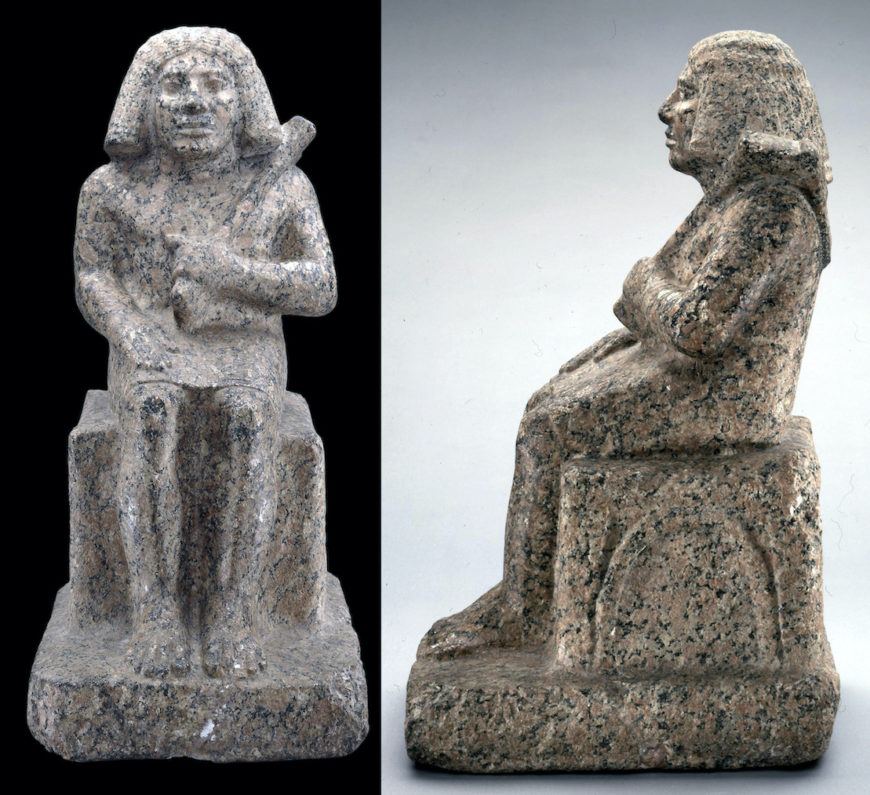
Statue of the ship-builder Ankhwa, c. 2686–2613 B.C.E. (3rd dynasty), red granite, from Giza (Memphis), Lower Egypt, 13.4 cm high (©Trustees of the British Museum)
Egyptian sculpture is often thought to consist only of massive and regal statues of the kings of Egypt. However, there exist also more intimate images, so-called ‘private’ sculptures, made to be placed in the tombs of non-royal officials. The earliest date to the Third Dynasty (about 2686–2613 B.C.E.).
In this statue a ship-builder named Ankhwa is shown holding an adze, a woodworking tool indicative of his trade. An inscription carved on the figure’s kilt gives his name and titles. One of these titles ranks Ankhwa as a royal acquaintance. The quality of Ankhwa’s statue reflects this status and this statue was probably made in a royal workshop.
The style of private sculptures closely follows the conventions set by royal sculpture. It was static, frontally posed, and with idealized features. Before the Fourth Dynasty (about 2613–2494 B.C.E.), sculpture ‘in the round’ is rare, but this example from Third Dynasty is outstanding. The style is typical of this date: the slightly squat figure, the protruding face, and the curve of the back more pronounced than in ‘classic’ later Egyptian sculpture, although these features are partly the result of the hard granite chosen for the statue.
© Trustees of the British Museum




